How to build AI Agents from scratch: Complete guide
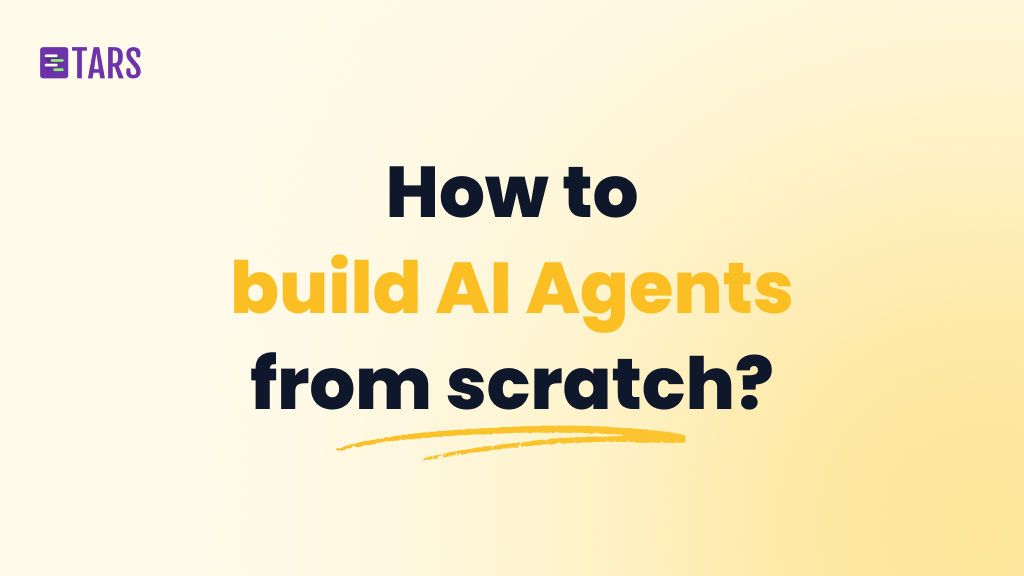
Look, building AI Agents used to be the kind of thing that required a computer science degree and way too much coffee. Not anymore. Tars has made it pretty straightforward to create smart AI Agents that actually work for your business – whether you want to automate customer support, help your team find information faster, or create something completely custom.
This guide walks you through the basics of getting started. Think of it as your training wheels version – once you get comfortable with these fundamentals, you can scale up to build much more sophisticated Agents.
Getting started with Tars AI Agent builder
Finding your way around
The main areas you need to know about:
- Agents: Where you build and manage your AI Agents
- Knowledge: Your file storage for documents and data socurces
- Tools: Access to over 300 tool integrations (yes, really)
Your three creation options
Click “Create Agent” and you’ll see three paths. Each one is designed for different situations, so pick the one that matches what you’re trying to do.
The four ways to create your Agent with ease using Tars
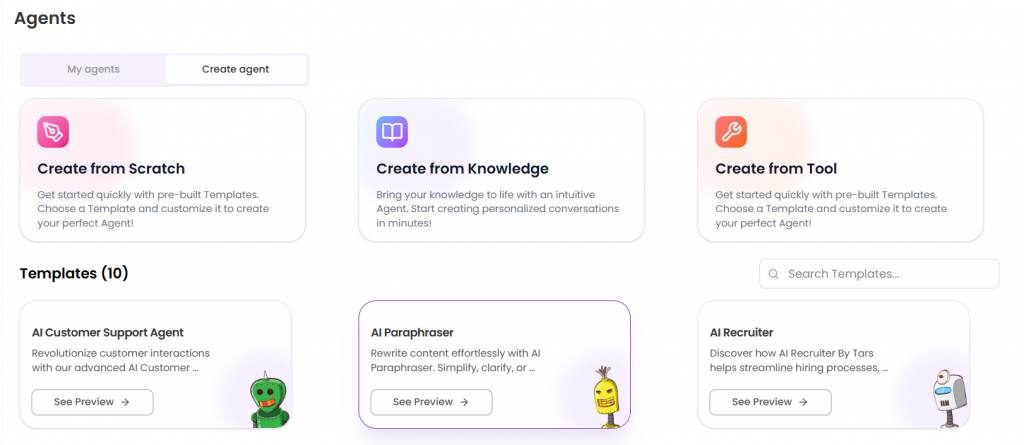
1. Create from knowledge
Perfect when you have an existing database, like documents, websites, FAQs docs, that you want your AI Agent to know about and reference to answer questions.
What this gets you:
- Upload your files and train
- Connect the KB Gambit to the AI Agent so your Agent instantly knows your content
- Great for support teams and anyone dealing with lots of questions
2. Create from tools
Choose this when your Agent needs to perform actions that involve other applications.
What this gets you:
- Connects to 300+ different tools
- Your Agent can create tickets, update databases, and send emails
- Perfect for automating workflows
3. Create from scratch
The blank canvas option. Start with nothing and build exactly what you need.
What this gets you:
- Complete control over everything
- Build weird, wonderful, or very specific Agents
- Best for unique business needs
4, Using templates (the smart shortcut)
Step 1: You can browse and choose the template that fits your needs. Each template comes with preview videos and setup instructions.
Step 2: Swap in your own content, adjust the conversation style, and modify the connected tools to match what your company actually uses.
Step 3: Update welcome messages, set your tone of voice, and configure what happens when things go wrong.
Building from a knowledge base
How it actually works
Step 1: Drop in PDFs, Word docs, web pages, or connect your Google Drive. The system reads through everything and figures out what’s important.
Step 2: Tars automatically creates conversation flows based on what you uploaded. Your AI Agent is connected to all that information right away.
Step 3: Tweak the responses, add your brand voice, and set up what happens when someone asks something the Agent doesn’t know.
When this works best
- Customer support (obviously)
- Internal help desks
- Anyone tired of answering the same questions repeatedly
- Teams that need to make company knowledge actually accessible
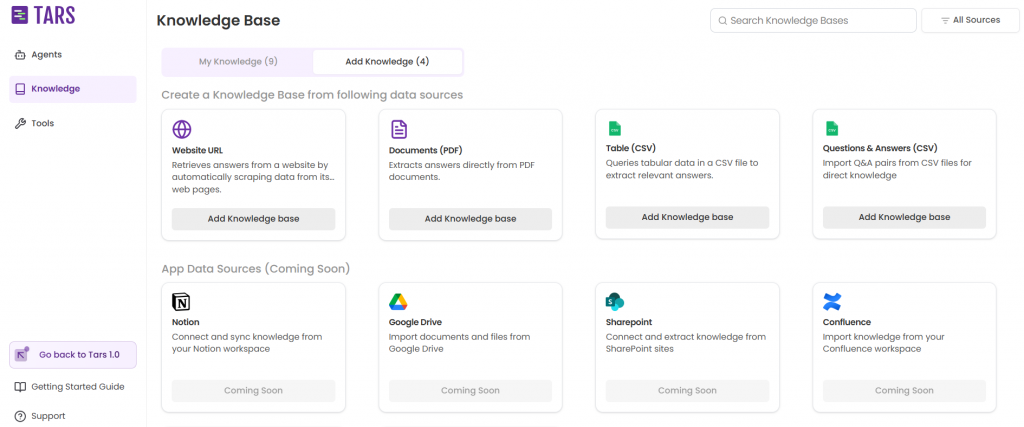
Creating from tools and integrations
What’s available
The integration list is pretty impressive with multiple options like Salesforce, HubSpot, Slack, Shopify, and hundreds more. If your team uses it, there’s probably a way to connect it.
Setting it up
- Pick your tools: Browse the library and select what you need
- Connect everything: Handle the authentication (it’s easier than it sounds)
- Define actions: Tell your Agent what it can do with each tool
- Build the workflow: Create the logic for how everything works together
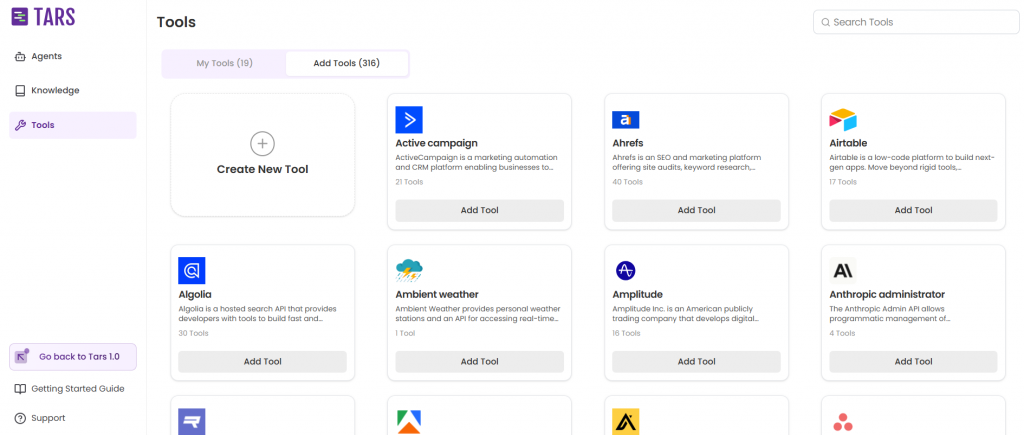
Setting up your AI Agent Gambit
What the Gambit actually does
This is the brain of your AI Agent. It decides how to process information, when to refer to a KB, tool calls, and how to maintain context throughout conversations.
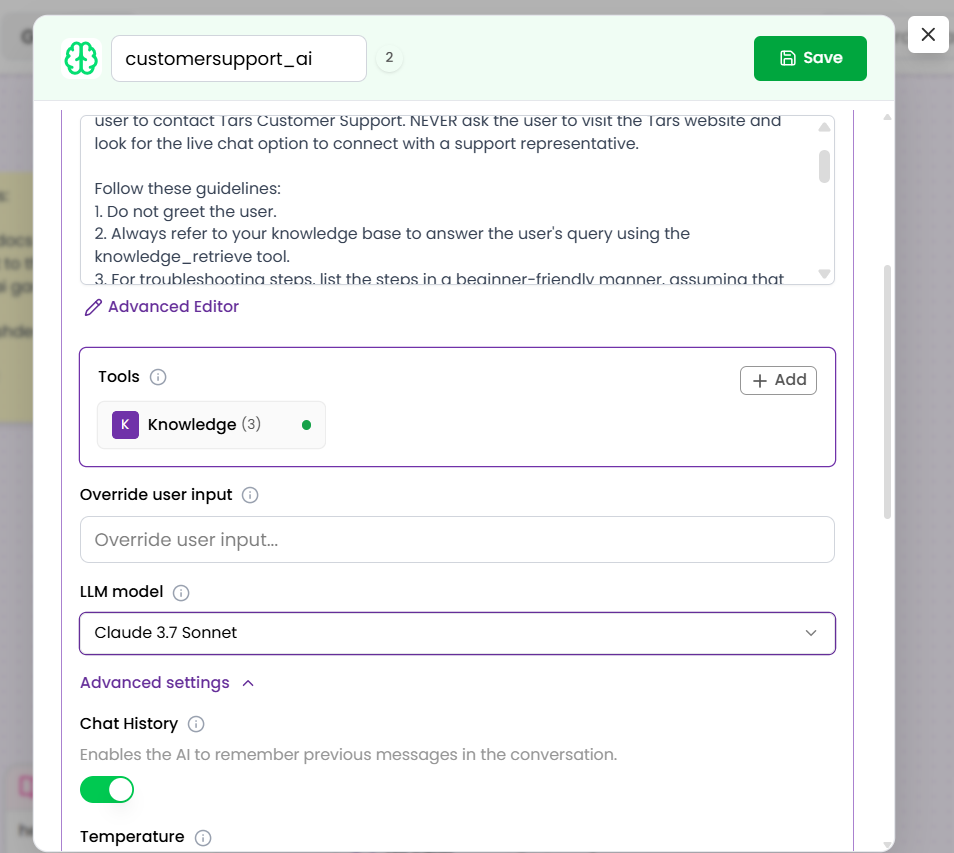
You can add custom logic, set up conditional responses, choose base LLM models, enable chat history, and configure detailed multiple settings.
However, the most important part of the AI Agent Gambit is the prompt. Prompt is the set of instructions and guardrails that the AI Agent functions based on.
The built-in prompt generator
With Tars, you don’t need to become a prompt engineering expert. The platform has a built-in ‘Generate with AI’ function that helps you create a prompt within the Gambit.
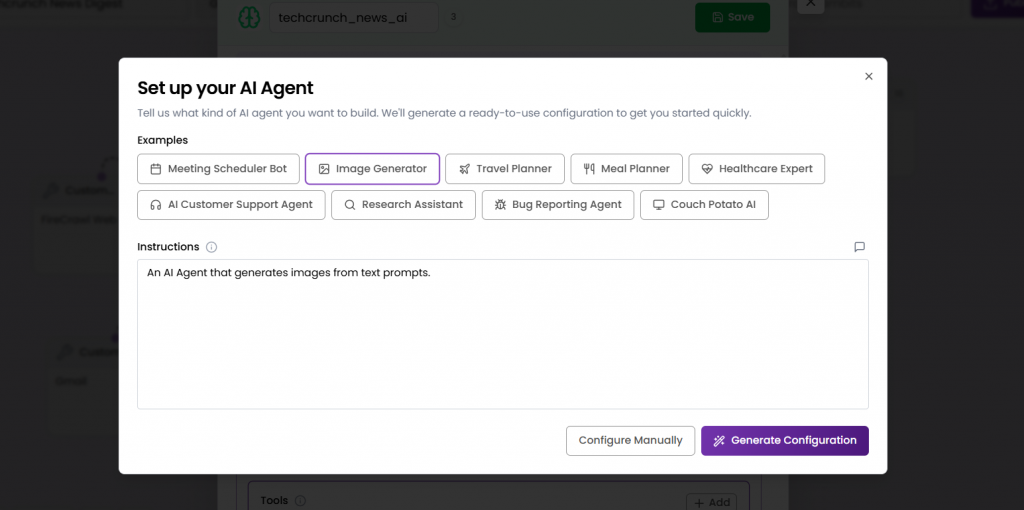
How to use it
- Tell the system what you want your Agent to do, who it’s for, and any specific requirements.
- The AI generates detailed prompts and creates welcome messages fit for your AI Agent.
- Try different variations, see what works best with real conversations, and make adjustments.
Testing your Agent
You can test your Agent right in the platform:
Real-time testing: Chat with your Agent as you build it. See how it responds, catch problems early.
Scenario testing: Run through different types of conversations, test edge cases, make sure your knowledge base covers what people actually ask about.
Making improvements
- Watch how real users interact with your Agent
- Update your knowledge base regularly
- Refine prompts based on actual conversations
- Monitor performance and fix issues quickly
Tips that’ll save you time
Knowledge base tips
- Keep your source content current and well-organized
- Use clear headings and structure in your documents
- Include different ways people might ask the same question
- Test with content that covers your most common queries
Conversation design
- Keep flows natural and conversational
- Always have a backup plan for when your Agent doesn’t know something
- Test with real users before going live
- Don’t try to make your Agent handle every possible scenario on day one
Integration management
- Test your connected tools regularly
- Keep authentication fresh
- Have fallback options when integrations break
- Start simple and add complexity gradually
Continuous improvement
- Review conversation logs regularly
- Ask users for feedback
- Keep up with new Tars features
- Don’t be afraid to experiment with different approaches
Conclusion
Building AI Agents with Tars is pretty straightforward once you know the basics. Whether you start with a knowledge base, connect some tools, or build from scratch, you’ll have a working Agent faster than you probably expect.
Remember, this is just the beginning. These fundamentals will get you up and running, but there’s plenty of room to grow. You can scale up to much more sophisticated Agents as you get comfortable with the platform and understand what your users actually need.
The key is starting simple, testing with real people, and improving based on what you learn. Your first Agent doesn’t have to be perfect – it just has to be useful.
A writer trying to make AI easy to understand.
- Getting started with Tars AI Agent builder
- Finding your way around
- Your three creation options
- The four ways to create your Agent with ease using Tars
- 1. Create from knowledge
- 2. Create from tools
- 3. Create from scratch
- 4, Using templates (the smart shortcut)
- Building from a knowledge base
- How it actually works
- When this works best
- Creating from tools and integrations
- What’s available
- Setting it up
- Setting up your AI Agent Gambit
- What the Gambit actually does
- The built-in prompt generator
- How to use it
- Testing your Agent
- Making improvements
- Tips that’ll save you time
- Knowledge base tips
- Conversation design
- Integration management
- Continuous improvement
- Conclusion


Build innovative AI Agents that deliver results
Get started for freeRecommended Reading: Check Out Our Favorite Blog Posts!
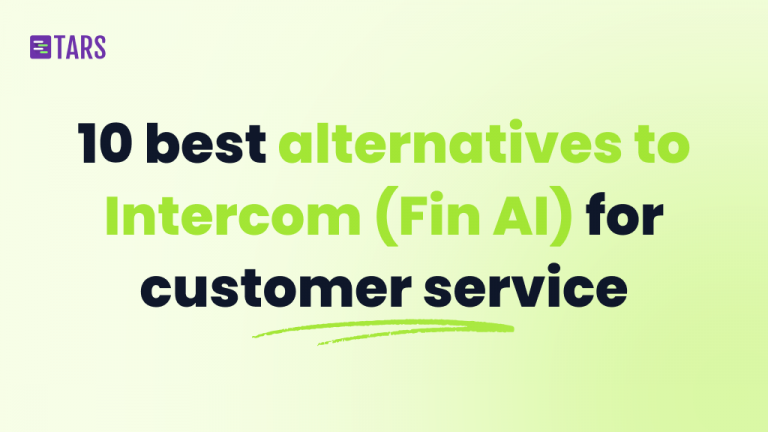
10 best alternatives to Intercom (Fin AI) for AI-powered customer service [2025]
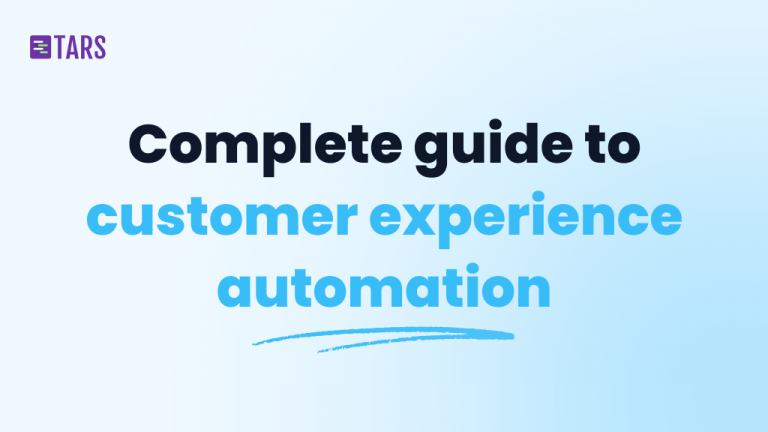
Customer experience automation: The complete guide to CXA in 2025
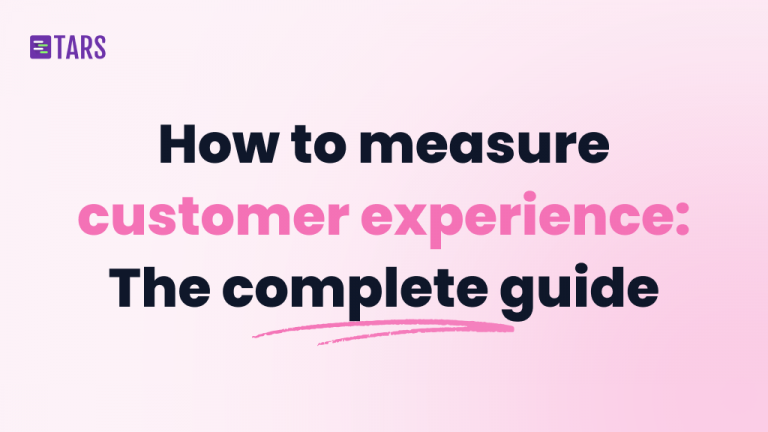
How to measure customer experience: The complete guide for AI-powered support and growth

Our journey in a few numbers
With Tars you can build Conversational AI Agents that truly understand your needs and create intelligent conversations.
years in the conversational AI space
global brands have worked with us
customer conversations automated
countries with deployed AI Agents